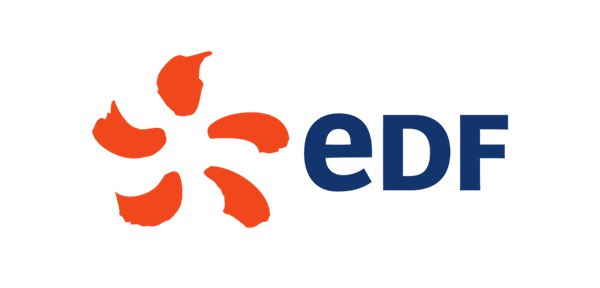Powering the construction of two nuclear reactors
Electricity provider EDF is using ArcGIS Enterprise to help it build the UK’s first new nuclear power plant in more than twenty years. A suite of ArcGIS web apps, mobile solutions and dashboards for discrete teams are now being used to drive on-site safety, quality, productivity and collaboration, helping Britain’s biggest action on climate change stay on track.
The emergency team uses ArcGIS mobile solutions to carry out site inspections and implement improved safety measures
The electrical team uses ArcGIS web apps and dashboards to minimise the use of generators, avoid unnecessary costs and reduce emissions
ArcGIS Dashboards display hotspots by neighbourhood enabling the council to implement targeted interventions to reduce community transmission
The Challenge
Already Britain’s biggest generator of zero carbon electricity, EDF is driving the development of new nuclear energy sites that will increase the availability of sustainable energy in the UK. At Hinkley Point C in Somerset, it is building two new nuclear reactors to generate zero carbon electricity for around six million homes. This enormous and highly complex construction project involves more than 6,500 people on site, thousands of people off site and a supply chain of partners extending all around the world. EDF needed an effective way to share project and site information with these employees, contractors and partners in order to inform decision making, ensure site safety, support collaboration and improve efficiency.
“The number of people using ArcGIS is growing every day, as more and more people become aware of what ArcGIS has to offer.”
Jon Dolphin, GIS Lead, Nuclear New Build, EDF
The Solution
After creating an initial proof of concept using Esri’s ArcGIS Online solution, EDF adopted Esri’s ArcGIS Enterprise to support the Hinkley Point C project. Hosted in EDF’s Azure cloud environment, this core system provides a portal to the project’s spatial data and is currently used by over 750 employees and third-party contractors. Jon Dolphin, Geographic Information System (GIS) Lead (Nuclear New Build) at EDF says, “The ArcGIS Online proof of concept rapidly captured imaginations of what was possible using GIS in a megaproject. Now, the number of people using ArcGIS is growing every day, as more and more people become aware of what ArcGIS has to offer.”
Using ArcGIS Enterprise, EDF has created suites of maps, web apps, mobile solutions and dashboards for specific teams or groups of users, including the emergency team, environmental team, temporary works team, electrical team and radiological safety team. Forming integrated, ArcGIS-driven workflows, these solutions allow employees and contractors to access data on demand and perform their jobs as efficiently as possible. Many of the solutions have been built using ArcGIS Field Maps, Survey123 for ArcGIS and ArcGIS Dashboards, replacing complex data collection methods, excel spreadsheets and manually-generated reports.
“If a picture paints a thousand words, a map paints a thousand pictures.”
Jon Dolphin, GIS Lead, Nuclear New Build, EDF
Benefits
Assurance of safety measures
A suite of ArcGIS solutions developed for EDF’s emergency team at Hinkley Point C is helping to ensure the safety of the thousands of employees and contractors who may be working across the 174 hectare site at any one time. Inspectors use ArcGIS field apps to check that rendezvous points are accessible and in good condition, so that medical aid and assistance can be delivered promptly in an emergency. If any obstructions or other issues are identified, details can be collected immediately in the field and routed to the people who need to take action, enabling the assurance of safety measures far more quickly.
Improved cost efficiency and compliance
Across many aspects of the construction project, ArcGIS is helping EDF to operate cost efficiently and comply with applicable legislation. For example, EDF has created an ArcGIS workflow for awarding and managing permits for the use of temporary power generators. Replacing a spreadsheet-based process, the ArcGIS solution uses apps, maps and dashboards to enable managers to understand precisely where generators are needed and for how long. With this improved oversight, they can ensure generators are only used when absolutely necessary, reducing costs, lowering emissions and ensuring compliance with emissions legislation.
Effective coordination of simultaneous works
ArcGIS Enterprise is becoming a core business system, helping EDF to coordinate hundreds of simultaneous programmes of work and keep this mega-project on schedule. One key ArcGIS solution enables EDF to manage temporary works, such as scaffolding, excavations or earth works, ensuring that the activities of one contractor do not impede the activities of another working in close proximity on a different aspect of the build. Managers use a suite of integrated ArcGIS maps, dashboards and field apps to plan the temporary works and then inspect them to ensure they are proceeding in the agreed way, in the right place.
Clear visibility of the bigger picture
With so many different teams and contractors all working together to deliver the new nuclear reactors, ArcGIS Enterprise plays a critical role in ensuring that everyone has access to the same single source of accurate information and can collaborate effectively. Any approved user can access ArcGIS Enterprise to see the latest as-built site drawings and plan their jobs safely with an accurate knowledge of the wider construction project. “ArcGIS helps different people, teams and contractors to understand the big picture and how they fit into it,” Dolphin says. “If a picture paints a thousand words, a map paints a thousand pictures.”
Shared understanding of environmental constraints
EDF is increasingly using ArcGIS Enterprise to help it manage environmental aspects of the construction project and plans to incorporate more environmental monitoring data in the near future. It also intends to make greater use of ArcGIS to visualise complex environmental implications such as light pollution and the continued implementation of associated planning conditions. Already, the organisation uses ArcGIS Enterprise to make all employees and contractors aware of environmental constraints, such as bat corridors, to help everyone work together to safeguard the area’s wildlife.



